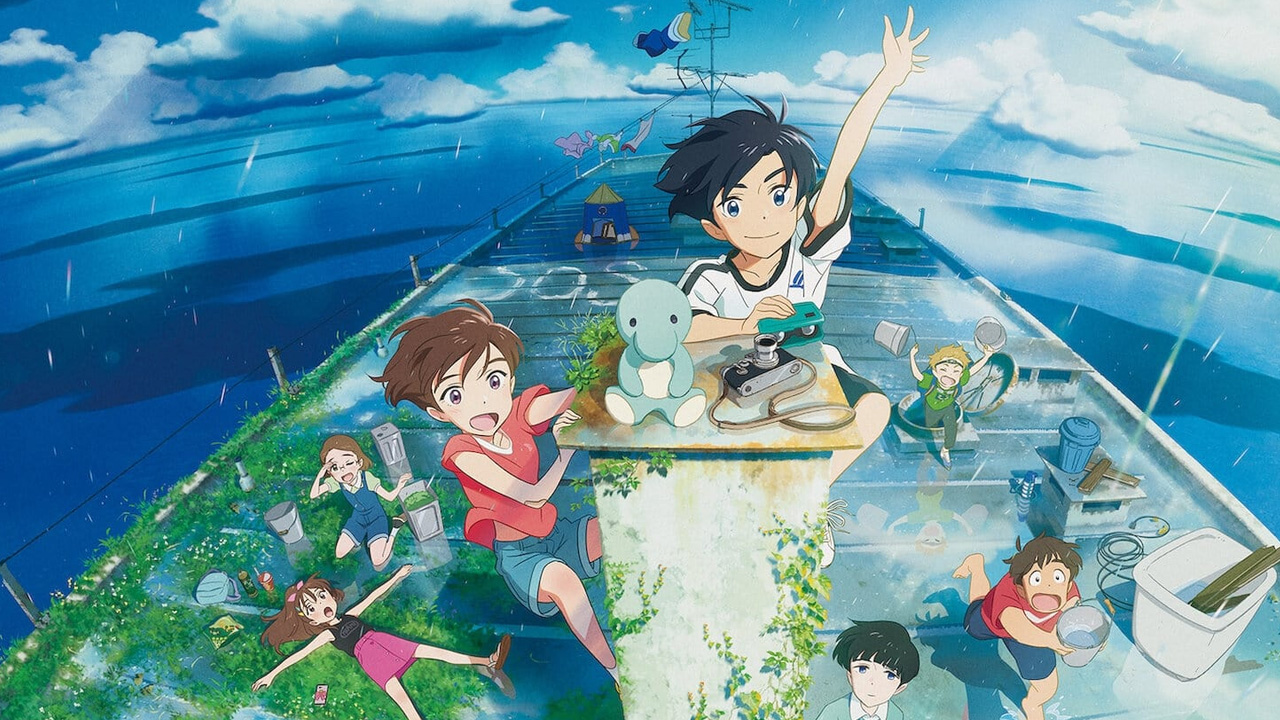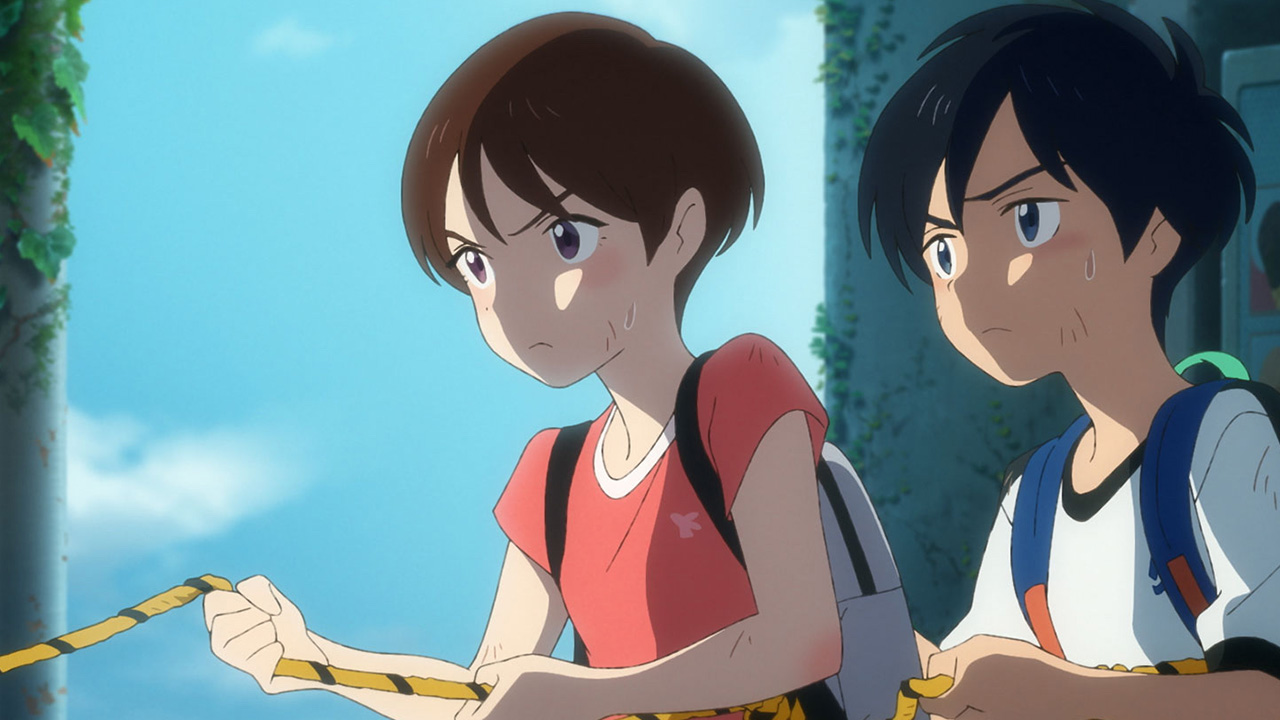Drifting Home uses an audacious idea to capture the complex emotions of youth
The film stuffs great ideas into one original idea. It’s also the type of anime that leaves nothing to subtlety.

Drifting Home follows a group of young friends in an abandoned apartment building who suddenly find themselves, and the building, floating in the middle of the ocean. It’s an audacious concept, but as Liam Maguren writes, it’s largely informed by lofty themes and heavy emotions.
Akin to this year’s loopy disappointment Bubble, Drifting Home initially looked like another Netflix anime feature with a wild idea in search of a story. It makes for a cool visual—a group of older kids on top of a building-turned-boat navigating the vast and sunlit ocean planes—which could have sustained a fun but forgettable adventure. But once the story unfolds, it becomes clear how the lofty themes and heavy emotions inform the film’s audacious concept.
Foster siblings Natsume and Kosuke haven’t been getting along recently. Natsume can’t stay away from their old abandoned apartment block where her memories of happier times remain while Kosuke’s grown irritable now that they live in different places (and social media platforms aren’t helping them stay connected). No longer little kids but still children, they’re at an age where they’re introduced to key human experiences like nostalgia, grief, regret, and letting go of the past.
To a young person with no instruction manual on how to deal with these overwhelming emotions, they feel… adrift… lost at sea… stuck on top of their former home floating in the middle of the ocean. Drifting Home makes these feelings literal by placing Natsume and Kosuke in this impossible scenario—along with five of their unfortunate friends.
As a fantasy adventure, Drifting Home makes good use of this surreal swashbuckling situation. One sequence sees a starving Kosuke zipline across to a passing gymnasium to break into a vending machine. With only minutes to gather supplies before the ship/building drifts too far away, it’s one of the film’s many engrossing scenes that make you forget the whole absurdity of this world.
Having said that, if I were to write down the film’s climax with no hint of exaggeration, you’d probably ask my editor to fire the obviously intoxicated person who wrote the Drifting Home review. It’s a completely bizarre sequence on the face of it but, when you’re immersed in this thing, it becomes a brash and wholly unique slab of oceanic action.
It may look daring to put children in a serious survival situation, but cinema’s filled with such stories of kids battling weird and worrisome wildernesses, from Henry Selick’s fantastical James and the Giant Peach to the brutal ’60s adaptation of Lord of the Flies and the grandmother of them all The Wizard of Oz. Drifting Home makes for a fantastic contemporary addition to this library, born from the realities of modern housing with images of downing buildings sure to trigger woes of the coming climate crisis (perhaps unintended, but effective nonetheless).

It’s also the type of anime that leaves nothing to subtlety. Characters explode with their feelings and say exactly what’s on their minds, so don’t enter this expecting a ponderous Studio Ghibli experience. Making up for this lack of nuance, however, is the film’s gentle empathy towards children and the buildings they call home. Filmmaker Hiroyasu Ishida drew a lot from his own experiences and it shows, not only with his attentive consideration for the weight of young emotions but also in his respect for living environments.
Drifting Home feels like a lot of great ideas stuffed into one superbly original idea, but by personifying the building we leave behind, the film ultimately reveals itself to be a very touching take on the haunted house genre.






















